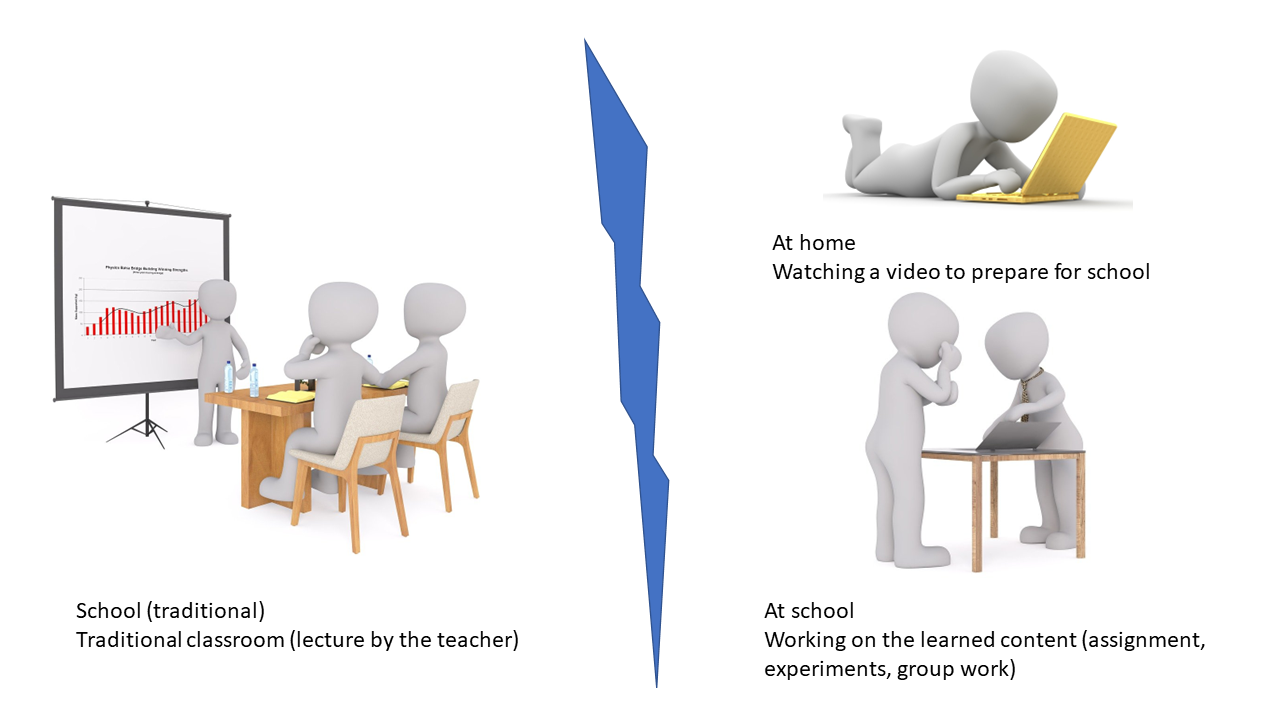The Flipped Learning 3.0 Framework is an innovative approach to education that has gained increasing popularity recently. It is a new way of thinking about teaching and learning that is designed to improve student outcomes and enhance the learning experience. The framework is based on the idea that students can be more actively engaged in their own learning if they are provided the opportunity to engage with educational content outside the traditional classroom setting.
Core concept
The core concept of Flipped Learning 3.0 is to “flip” the traditional classroom model, in which students listen to lectures and complete homework assignments outside of class, on its head. Instead, students are given access to educational content, such as video lectures, readings, and interactive simulations, before they come to class. This allows them to engage with the material on their own time, at their own pace, and in a way that works best for them.
In the classroom, students can then spend more time working on hands-on activities, projects, and discussions that help them to better understand and apply what they have learned. This approach allows for a more personalized and interactive learning experience, as students can receive immediate feedback from their teachers and peers.

Comparison of the traditional classroom with the two major learning spaces in Flipped Learning (Source: FAdE Erasmus+ project)
Benefits of Flipped Learning 3.0
One of the key benefits of the Flipped Learning 3.0 Framework is that it helps to level the playing field for all students. By providing access to educational content outside the classroom, students who may struggle with traditional lecture-style instruction can learn at their own pace and in a way that works best for them. Additionally, the framework allows for more personalized instruction, as teachers are able to adjust their lessons to meet the needs of individual students.
Another important aspect of the Flipped Learning 3.0 Framework is its emphasis on student-centered learning. This means that students are provided the opportunity to take an active role in their own learning, rather than simply being passive recipients of the information. This can help to increase student engagement, motivation, and overall achievement.
Technology
In addition to its focus on student-centered learning, the Flipped Learning 3.0 Framework also incorporates the latest advancements in technology and educational research. For example, the use of digital tools and resources, such as online video lectures and interactive simulations, allows for a more dynamic and engaging learning experience. The framework also recognizes the importance of collaboration and group work, as these practices have been shown to be effective in promoting deeper learning and student engagement.

Technology plays an important role in Flipped Learning 3.0. Nevertheless, technology is not the major factor.
Key elements in Flipped Learning 3.0
Flipped Learning 3.0 is a student-centered teaching approach that emphasizes active engagement and personalized instruction. This framework has several key elements that contribute to its effectiveness and success in the classroom.
The individual Learning Space
The first key element of Flipped Learning 3.0 is pre-class preparation. This involves students engaging with educational content, such as videos, readings, and interactive simulations, before they come to class. This allows students to become familiar with the material at their own pace and in a way that works best for them, helping to level the playing field for all students.
The Group Learning Space
The second key element is in-class activities. In the classroom, students are able to spend more time working on hands-on activities, projects, and discussions that help them to better understand and apply what they have learned. This provides opportunities for immediate feedback, allowing for a more personalized and interactive learning experience.
Integration of Technology
Another important aspect of Flipped Learning 3.0 is technology integration. The use of digital tools and resources, such as online video lectures and interactive simulations, helps to create a more dynamic and engaging learning experience. Additionally, the framework recognizes the importance of collaboration and group work, which can help to promote deeper learning and student engagement.
Learner-Centered approach
Finally, the emphasis on student-centered learning is a key element of Flipped Learning 3.0. This means that students are given the opportunity to take an active role in their own learning, rather than simply being passive recipients of the information. This can help to increase student engagement, motivation, and overall achievement.
Summary
Concluding, the key elements of Flipped Learning 3.0 include pre-class preparation, in-class activities, technology integration, and student-centered learning. These elements work together to create a personalized, interactive, and engaging learning experience that can improve student outcomes and enhance the overall learning experience. The Flipped Learning 3.0 Framework is a cutting-edge approach to education that has the potential to revolutionize the way students learn. By providing students with the opportunity to engage with educational content outside the traditional classroom setting and emphasizing student-centered learning, this framework has the potential to improve student outcomes and enhance the overall learning experience. As such, it is an important and timely development in the field of education that is well worth considering for teachers, schools, and educational institutions.
